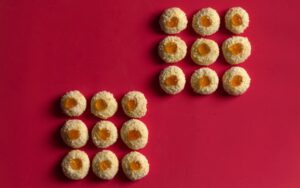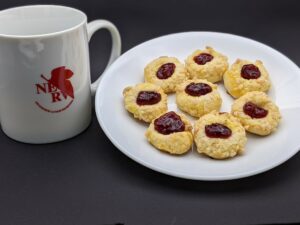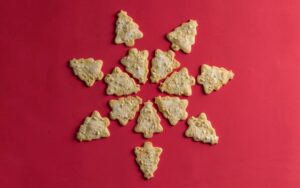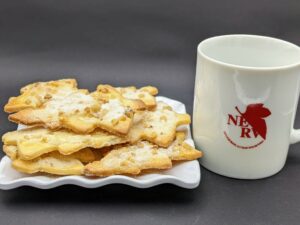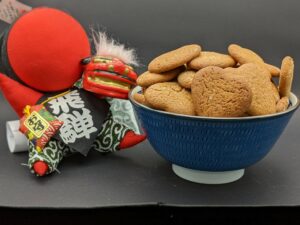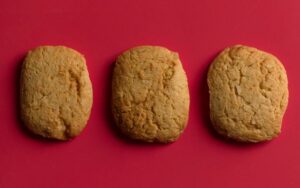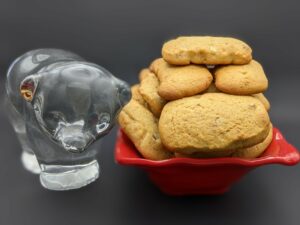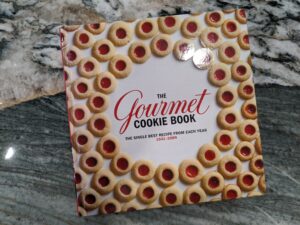Recipes
JELLY CENTERS – Gourmet, June 1948
INGREDIENTS
1 cup butter
1 cup confectioners sugar
8 eggs
3 cups flour
1 lemon
1/8 teaspoon salt
1/2 cup blanched almonds, finely chopped
1/2 cup granulated sugar
Cream butter, add sugar, continue to cream until pale colored. Separate 6 eggs (whites will not be used). Make zest of 1/2 lemon and juice 1/2 lemon. Add yolks one at a time to the butter/sugar mixture, with salt, lemon juice, and zest. Gradually add flour. Refrigerator overnight.
Preheat oven to 350 F.
Mix chopped almonds and granulated sugar. Separate remaining two eggs (whites will not be used). Beat egg yolks. Lightly flour hands and roll dough into spheres the size of a marble. Press the tip of a little finger into each to make a deep indentation. Dip side of cookie with indentation in egg yolks, then in almond/sugar mixture. Place on greased baking sheet or parchment with indentation upward. Bake until lightly brown, about 12 minutes. When cool, fill indentations with apricot jam or any red jam or jelly
RESULT
This technique requires practice; I advise doing only a few cookies at a time until it works for you. The indentation tends to vanish as the cookie expands with baking, unless it is very deep. The original recipe says to sprinkle the tops with almonds/sugar. This does not work because the almonds/sugar fills up the indentation. A final problem that I never solved was that the cookies are somewhat thick and the inner part does not bake completely and remains raw even after the bottoms are almost burned. You can’t make the cookie thinner because it has to have that deep indentation. If you are fixated on this cookie, you might try baking at 325 or even 300 F for longer. When I was fed up with trying to make this recipe work, I still had about half the dough left. I settled for rolling it out to about 1/8 inch and cutting circles. This produced satisfactorily baked cookies that, curiously, had a flaky texture, almost like a mock puff paste. They were nearly flavorless, though. They might be rescued by any of the flavors in previous cookies in this series that I liked.
And that’s all, folks! At least for this season. I might do this next year. Let me know if you liked it!
First photo below: Gourmet. Second photo: mine.
